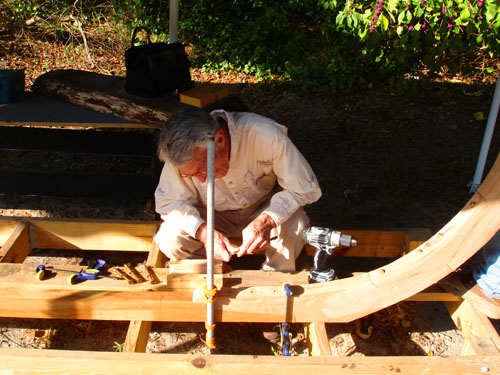
Today boatbuilders prepared the joinery, or scarf, that will attach the Galveztown yawl boat’s assembled stem post to the craft’s keel. This was done by clamping the stem to the keel and drilling pilot holes for the silicon bronze fasteners, in this case nuts and bolts with washers.
The decision was made to go with bronze rather than iron or stainless steel because of the corrosion resistance of bronze in the saltwater environment.
Boatbuilder drilling pilot holes in keel/stem scarf.
After piloting the holes for the bolts the scarf was disassembled and the keel turned upside down in order to counter sink the bolt holes for the fastener heads.
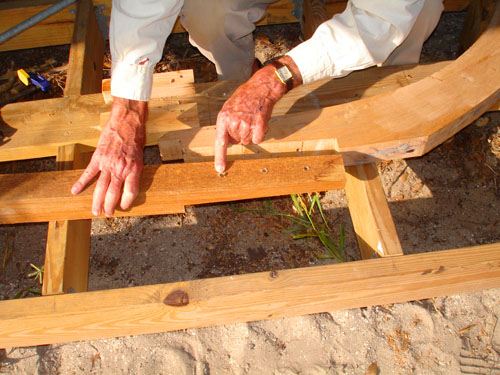
Jim Gaskins pointing out pilot holes on the bottom of the keel scarf to be counter sunk.
Since the holes had been predrilled a guide had to be made out of a small piece of wood. This permits the accurate centering of the drill bit over the pilot hole. Once the counter sinking is well established the guide is removed and the process continued to a depth that will permit the entire head of the bolt to rest below the level of the wood.
Counter sinking the pilot holes for the bolt heads in the bottom of the keel.
Once the counter sinking is done the pilot holes have to be chiseled to accommodate the square shoulder on the bolts that will keep them from spinning in their holes. Normally this would not be necessary since in most woods the tightening of the bolt would pull the square shoulder down into the wood where it would lock in.
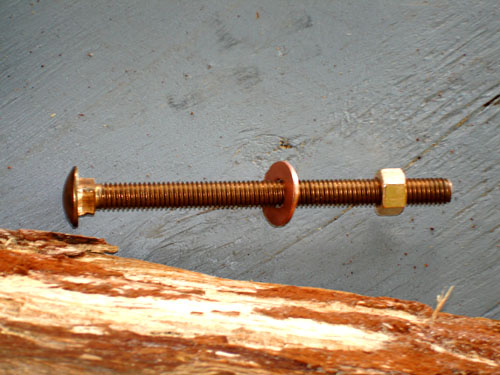
Bolt showing square shoulder for counter sinking.
In the case of Live Oak, the wood is very hard and it is likely the bolt threads would be stripped off before the square shoulder sank into the hard wood.
Mortesing the pilot holes for the fasteners.
Once the chisel work is done the keel is ready for dry fitting to the stem post.
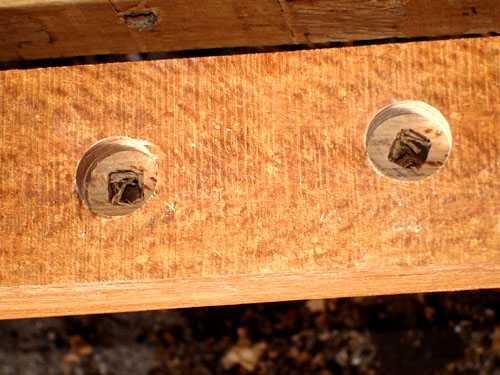
Keel showing counter sinking and chiseling to accommodate the bronze fastener’s square shoulder.
The scarf is reassembled and clamped together. The bolts are then inserted form the bottom of the keel and tapped into place with the square shoulders resting in their chiseled mortises. Then the washers and nuts are locked in place.
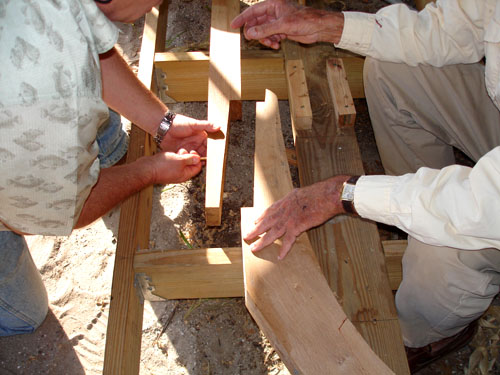
Boatbuilder preparing to reassemble the scarf.
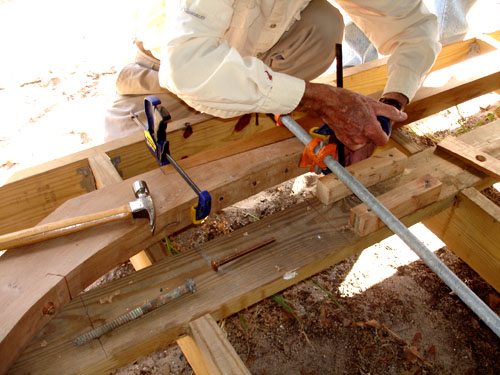
Clamping the scarf.
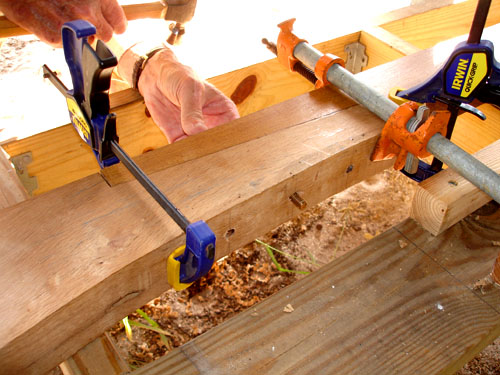
Fitting a bolt.
Bolting the keel/stem scarf together.
This scarf will remain assembled until the sternpost, deadwood, and transom are installed and the rabbets cut for the hood ends of the planks. It will then be disassembled and the surfaces of the scarf painted to seal them and a bedding compound placed in the scarf to allow for movements associated with stress and uneven expansion of keel and stem once the boat is in the water. One of the principal ingredients of the bedding compound is Linseed oil. Thus if the surfaces of the scarf are painted the wood will not absorb the oil out of the bedding compound resulting in a very long lasting well bedded scarf.

Keel and stem post of the Galveztown yawl stood up on its building platform.
The next step in the Galveztown yawl construction will be the shaping of the dead wood needed to stabilize and reinforce the sternpost.

